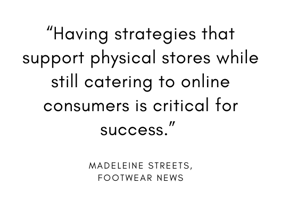
A year ago, no one could have imagined consumers would be holiday shopping with masks on. This year’s holiday season is going to look quite different for both retailers and consumers because of the COVID-19 pandemic. The way consumers shop has changed, with many choosing to spend less and others starting their holiday shopping earlier than usual. For retailers, these changes mean they have to adapt to social distancing restrictions, anticipate spikes in online shopping, and work to prevent inventory issues.
Below are four changes in consumer behavior that retailers should prepare for this holiday season.
1. Consumer Spending
The pandemic affected many consumers financially, which has caused retailers to be concerned about a possible YOY drop in sales. Daniel Bachman, Deloitte’s U.S. economic forecaster, predicts that while high unemployment can negatively affect sales this year, reduced spending on other services like restaurants and travel might actually boost sales.
A recent report by Deloitte indicates the growth rate for retail sales will be less than in previous years, but that they are still expected to rise between 1% and 1.5% during the November to January timeframe. Another report by AlixPartners included October as part of the holiday season this year, and forecasts an increase in 1.0%-2.6% from October – December compared to the same three-month period last year.
“The digital retail experience tends to lean more toward self-service than the in-store shopping journey. One solution to filling this void is clienteling, which makes digital shopping more human.” – Sarah Jones, Sourcing Journal.
2. Online vs. In Store
While stores were closed, 56% of people did more online shopping at home. This trend is expected to continue in the next two quarters. Social distancing is still in effect, and most consumers are avoiding crowded places. Because of this, more holiday shopping will inevitably occur online. In fact, 72% of consumers anticipate they will continue shopping more online even with stores open.
 Deloitte expects online holiday sales to increase by 25% to 35%. eBay has reported that a majority (54%) of their shoppers claim they will be doing all of their holiday shopping online, and nearly three-quarters plan to buy more of their gifts online this year. BlackFriday.com also reported that consumers will prefer a digital experience this holiday season, with more consumers predicted to shop on Cyber Monday compared to Black Friday.
Deloitte expects online holiday sales to increase by 25% to 35%. eBay has reported that a majority (54%) of their shoppers claim they will be doing all of their holiday shopping online, and nearly three-quarters plan to buy more of their gifts online this year. BlackFriday.com also reported that consumers will prefer a digital experience this holiday season, with more consumers predicted to shop on Cyber Monday compared to Black Friday.
3. Holiday Specials & Sales
Traditionally, Black Friday has involved getting consumers in store. This year, retailers will have to limit store traffic and reinforce public safety measures. Many will be encouraging and facilitating online shopping to compensate. For example, Target has already said it will have 20,000 additional products on its e-commerce site this year.
This surge in online sales has already caused supply chain bottlenecks, and Bloomberg predicts this will make e-commerce costs soar. To avoid this, retailers will be encouraging buy online, pick up in store. They will also stagger their promotional events so that consumers begin shopping well before Black Friday.
4. Early Season Start
An estimated 49% of consumers plan to start their holiday shopping before Halloween, up by 7% compared to last year. According to Joel Bines, global co-leader of the retail practice at AlixPartners, consumers have been holiday shopping earlier and earlier every year, and the pandemic has accelerated this trend. Retailers also want to encourage consumers to begin shopping earlier to compensate for potential shipping and inventory issues, as well as make up for sales lost while stores were closed.
Hudson’s Bay and Canadian Tire are already selling Christmas clothing and decor, and Indigo is adapting by making shopping before and after hours available to loyalty members who feel compromised.
Retailers will need to stand out from competitors more than ever this holiday season in order to drive sales, both online and in store. Clienteling helps build customer loyalty by enabling store associates to build lasting, one-to-one relationships with customers at scale. They communicate in a personalized way with relevant messages that are tailored to the individual based on their profile and past purchases. Associates make recommendations by e-mail, live chat, video chat, text messaging or social media messaging, according to the customer’s preference.
80% of customers are more likely to purchase products or services from brands that provide personalised experiences. In fact, 72% of customers only engage with messages that are tailored to their interest.
Clienteling also gives retailers a direct connection to online customers. It allows the customer to ask questions and receive answers from local store associates in real-time, by video chat, live chat, e-mail, or text messaging.
Be Prepared For Anything
The average store associate now serves 94 online customers per week with Salesfloor, and have sales conversion rates between 12% and 15% which allows retailers to continue serving customers despite disruption to normal operations



